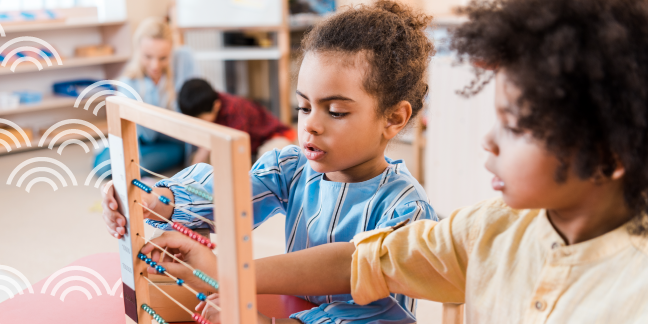Creating a Gender-Inclusive Early Childhood Classroom: 8 Ways to Support All Children and Families
June 18th, 2025 | 3 min. read

Every early childhood classroom includes a rich and diverse mix of children—each bringing their own identity and way of experiencing the world. Based on census and population data, chances are at least one child in your early childhood program does not conform to traditional gender expectations.* As educators, we have a responsibility to create environments that affirm and welcome all children, regardless of gender identity. That doesn’t mean introducing adult topics to children—it means respecting them as they are and providing a safe, inclusive space for every child to thrive.
Young children are developmentally wired to categorize. They notice details and differences in the people, animals, places, and things in their world and begin to create categories to describe them. As Jenny Fererro and Rebecca Bishop write in Guidance for Supporting Gender Diversity in Early Childhood Education, these natural inclinations provide educators with opportunities to support children in expressing their understandings and feeling safe to be who they are as members of their classroom community.
Understanding Gender in Early Childhood
Children can begin understanding their gender identity as early as 18–24 months. In fact, young children have a strong sense of who they are before they have the language to express it. And while many children’s identities align with the sex they were assigned at birth, some do not. Gender identity is not the same as sexual orientation or attraction—it’s about who a child knows themselves to be.
All young children deserve to feel seen, understood, and respected. Even the most well-meaning adults may default to assumptions: Girls wear pink and like to play with dolls. Boys like trucks and wear blue. Separating boys and girls for activities, praising appearance based on gender, or using gendered job titles such as “fireman” or “mailman” reinforce the idea that there are only two valid ways to be. But these norms can leave many children feeling unimportant and even invalidated.
8 Things Educators Can Do Right Now
Supporting young children as they are is easy to do. Here are eight inclusive practices you can implement today.
1. Read Inclusive Books
Choose stories to share with the children that feature different ways of being human and communicate acceptance. Some favorites include Julián Is a Mermaid by Jessica Love, All Are Welcome Here by Alexandra Penfold, A Boy Like You by Frank Murphy, Giraffes Can’t Dance by Giles Andreae, and From the Stars in the Sky to the Fish in the Sea by Kai Cheng Thom. You can find more curated lists at Diverse BookFinder and Family Equality.
2. Use Inclusive Language
Instead of saying “boys and girls” try “friends,” “children,” and “everyone.”
3. Respect Pronouns and Names
Ask children and families what names and pronouns they use—and honor them.
4. Revisit Your Forms and Paperwork
Update school forms to include “Parent/Guardian 1” and “Parent/Guardian 2” instead of just “Mother” and “Father.” Consider whether it’s necessary to ask for a child’s gender at all.
5. Avoid Gendered Groupings
Don’t line up children by gender or assign tasks based on being a “boy” or “girl.” Instead, group by favorite colors, birthday months, favorite game, or simply count off numbers.
6. Respond to Stereotyping with Curiosity and Respect
When a child says “That’s for girls!” or “You can’t wear that,” gently challenge the idea. “Colors are for everyone,” “Anyone can play with the toys in our classroom,” or “Everyone can dress up in what they like.”
7. Support All Staff in Inclusive Practices
Make sure all teachers and support staff use inclusive language and have access to professional development in creating welcoming classroom communities.
8. Listen to Children and Families
Families are the experts on their own children. Let families and the children themselves tell you how the children identify, what terms they use, and what makes them feel safe and supported.
Navigating Family Beliefs
Some families may feel uncomfortable with these topics or wish to introduce them at home. That’s okay. You can approach this with openness and professionalism:
- Share your goals: fostering kindness, respect, and inclusion.
- Offer resources for learning. Avoid expecting the family of a gender-expansive child to teach other families.
- Make space for conversations.
- Reassure them. This is not about sex. It’s about identity and belonging.
Your role is to ensure that every child in your care feels seen, accepted, respected, and safe. As educators, we follow the child—and that includes supporting children in being exactly who they are.
The most important message we can give young children is this: everyone is the expert on themselves. No one else gets to decide who you are. By building inclusive classrooms, we’re modeling empathy, challenging stereotypes, and giving all children the tools to navigate a diverse world with compassion and confidence.
*Fererro, Jenny, and Rebecca Bishop. 2022. Guidance for Supporting Gender Diversity in Early Childhood Education. Gryphon House.